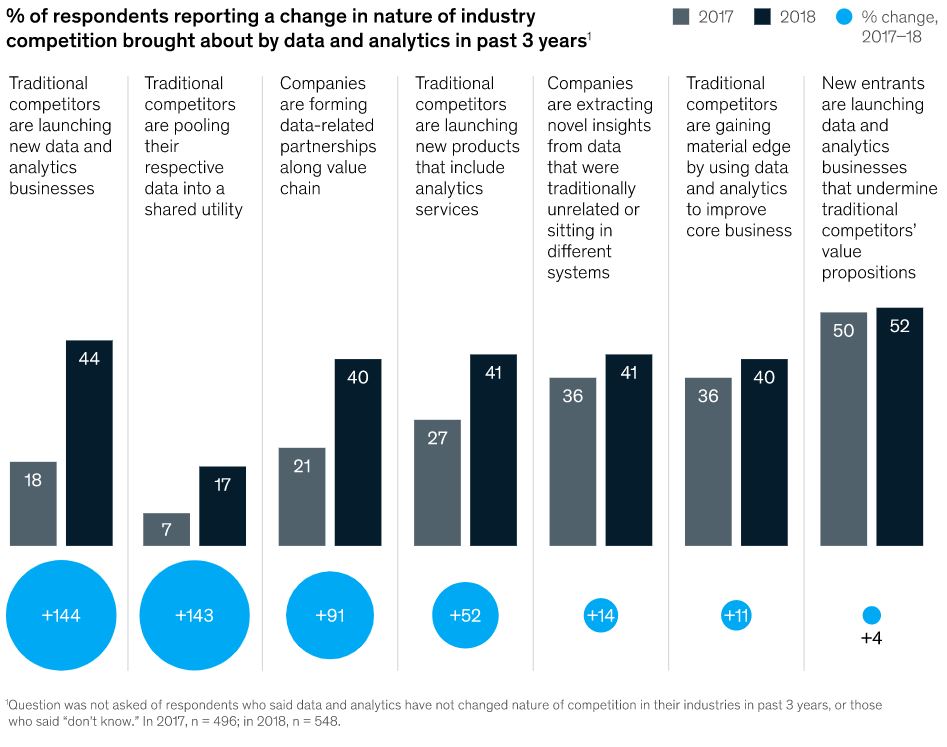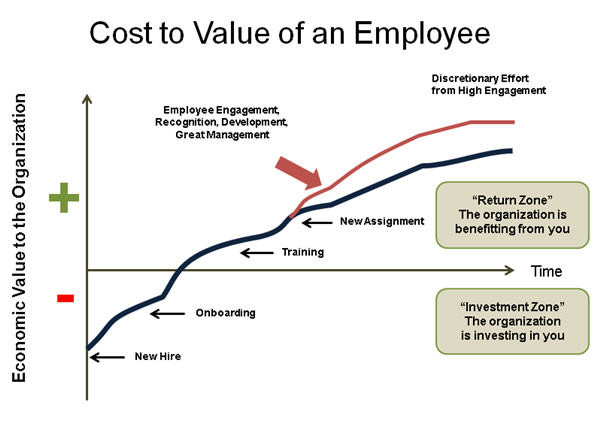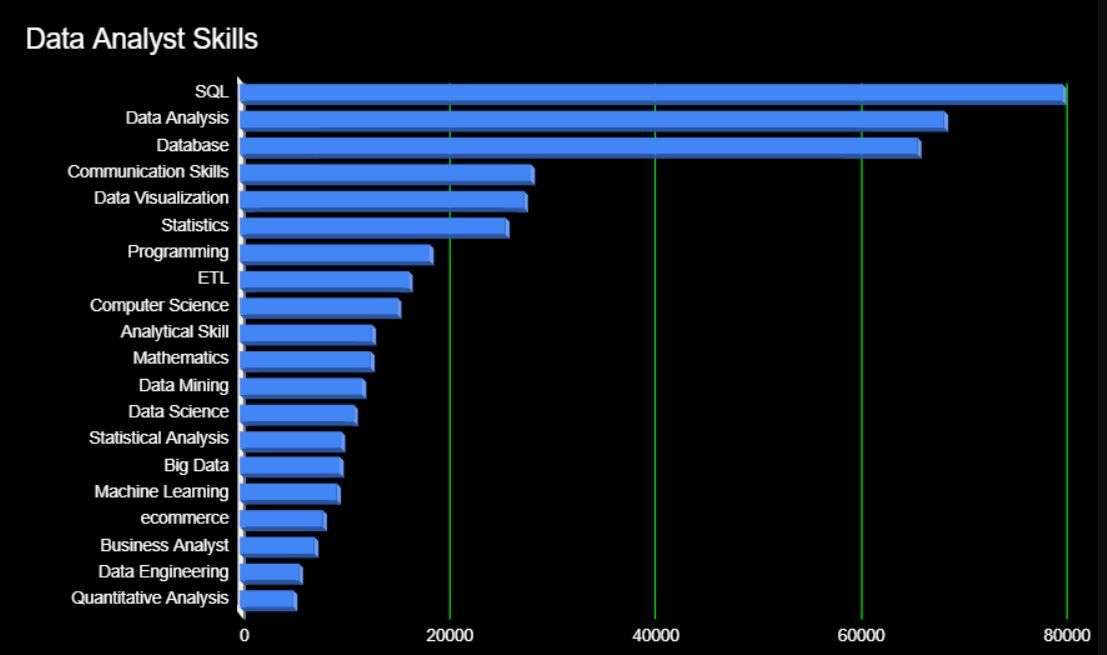Modern business practices rely heavily on massive amounts of data, making roles like data analyst, scientist, and engineer necessary.
Most companies from different industries like retail, IT, manufacturing, and healthcare employs teams of highly skilled data analysts to work with large datasets. Naturally, these companies need data professionals but hiring a data analyst that is the right fit for your company is harder said than done.
A recent article by McKinsey throws light on how big data analytics has transformed the modern business scenario. According to the article, more than 40% of companies form data-related partnerships with key stakeholders along the value chain.

Source: McKinsey
This infographic highlights how critical it is for companies to hire a data analyst that is knowledgeable and has the business acumen for driving intelligent decisions.
Even as corporations – big and small – pay top dollar for such individuals, a lot of them still fail to attract them.
The Right Process of Hiring a Data Analyst
HR experts know how critical it is for companies to hire and retain skilled data analysts.
Most companies successfully recruit data professionals but fail to keep a hold of them for a significant amount of time. Subpar employer branding, poor work culture & environment, and inadequate compensation are some of the main reasons corporations fail to attract the highest quality talent in data analytics.
We suggest a robust recruitment strategy so that your company not only hires exceptional data analysts but holds onto them for years to come. The below figure shows how employees can go from being a cost center to a value-generating asset for any business.

Source: LinkedIn
Like other professions, data analysts follow the same pattern and eventually become pivotal in revenue generation for a big enterprise. Hence, your recruitment strategy should be framed in such a way that it attracts talented data analysts to stay for many years.
Here are the best practices you should follow while hiring a data analyst:
1) Build a Strong Employer Brand
The first step to hiring an experienced and talented data analyst is to build a robust employer brand, so more people are attracted to your organization. Controlling and influencing how prospective employees, current employees, and other vital stakeholders view your company as an employer is known as employer branding. It entails everything you carry out to market your corporation as a top employer.
Employer branding is paramount in technical positions like data scientist, healthcare analyst, or machine learning engineer. These job seekers seek organizations with recognized workplace cultures and a strong emphasis on research and development. Joining a cutting-edge business that promotes innovation is the best way for today’s tech experts to prosper in the present technological transformation.
Therefore, it would be great to concentrate on creating a strong employer brand for your business to draw in the top people around. Tech companies should promote themselves as leaders in creativity and innovation and offer lucrative and fulfilling careers.
Using social media effectively is a terrific way to develop a powerful employer brand.
2) Write Compelling Job Descriptions
An attractive job description is arguably the most critical part of hiring a data analyst or any other technical role. It is the primary source of information about the position, including the responsibilities, tasks, benefits, and compensation.
Keep job descriptions concise and easy to understand. A job description for a data scientist begins with an impactful introduction to the field that briefly emphasizes its benefits. Describe the unique aspects of the position and how it fits within your business. In summary, you have the chance to give prospective employees background information and insight into the role.
While applying for various positions, most applicants also skim the job description. Hence, making the job description brief is crucial while still attracting candidates’ attention. Hiring managers should also avoid using technical terminology because it could alienate some candidates.
To create credibility, address the applicants directly using second-person pronouns like “you” and “your.” Include a brief discussion of the role’s growth opportunities and how they would assist the candidates in achieving their objectives in addition to the pay and benefits.
3) Leverage Technology to Your Advantage
The next step after posting a job opening on hiring boards is to assess and sort through the applications. Chances are you must’ve received hundreds of applications, if not more, making the recruitment process cumbersome and time-consuming. Hence, modern recruitment relies heavily on automation and other technologies that streamline the entire process.
According to a Gartner poll, 56% of businesses attempt to automate tedious and repetitive procedures in the hiring process. According to the same report, the three most popular uses of automated approaches in recruitment are HR operations, talent acquisition, and employee engagement monitoring.
The most important piece of technology that has revitalized the process of hiring a data analyst is application tracking software (ATS). These software tools simplify tedious processes like searching through hundreds of resumes for particular keywords and optimize the entire hiring process.
Application tracking systems are less expensive over the long run than hiring a group of HR specialists. Therefore, one of the most inventive ways to draw in top people is to invest in high-quality ATS or other HR Automation tools.
4) Skill Testing
Data analyst is a highly technical role, so the applicants must possess the technical know-how and skills to discharge their functions effectively. Sound knowledge of computer science, mathematics, and statistics are the primary skills required to excel as a data analyst.
The below figure shows the most in-demand skills for data analysts:

Source: Open Data Science
The majority of employers use advanced testing techniques to evaluate candidates’ abilities in the aforementioned domains. The testing phase can be carried out on your behalf by an expert, or you can conform to the same method.
5) The Interview Process
After skill testing, the final step is to conduct high-quality interviews with complete impartiality and questions that reflect a candidate’s true potential. Using structured interviews is the best way to standardize the interview process and ensure consistency and uniformity. Candidates are more likely to have a positive hiring experience through a systematic interview process.
When hiring for technical positions, many businesses still employ a generalist approach, which typically backfires and drives candidates to explore alternative possibilities.
Because they have little prior experience in the field, these recruiters regularly pass up excellent data analysts. Companies looking to fill top IT positions should modify their hiring procedures to meet candidates’ needs better.
This necessitates selecting hiring managers proficient in technical knowledge, medical and scientific concepts, and who can effectively connect with the applicants.
Additionally, applicants who weren’t chosen for the position should receive notice by email or phone, so they may search for alternative employment. Such practices are frequently regarded as one of the most creative ways to draw in top talent and go a long way in building a positive rapport with applicants.
Contact BenchPoint, a healthtech recruitment firm, if you’re interested in learning more about what you can do to attract the top data analysts in your industry. We’ll teach you how to keep an evergreen hiring pipeline so qualified applicants are only a click away whenever you need them.
We will be pleased to assist you with any questions or concerns you may have, and we can work with you to develop hiring strategies that are more clearly defined and yield the needed outcomes quickly.
